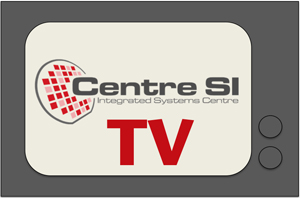Go to
June 12, 2009
MIMO and Network Coding towards Wireless Body-Area Sensor Networks
Toshiaki Koike-Akino, School of Engineering and Applied Sciences, Harvard University, Cambridge, MA
Abstract: Wireless communication technologies have brought us a lot of benefits in our lives; for example, radio and television broadcast services, cell phone systems, satellite links, wireless local area networks, wireless USB, etc. Radio communication techniques have lately received a great amount of attentions for medical applications including patient monitoring, tele-medicine, remote surgery, health promotion, accurate diagnosis and so on. The key technology is termed wireless body area networks (BAN) which exploits numerous sensor terminals. Challenging issues in this field include realizing ultra-low power devices, highly reliable and safe operations, and adaptive behaviors for individual cases.
For medical applications, we can adopt many advanced techniques which achieve low-power requirements, highly efficient transmissions, environment-aware dynamic optimizations. We focus on multiple-antenna communication scheme and physical-layer network coding. So-called multiple-input multiple-output (MIMO) systems emerged a decade ago as a promising approach to enhance the system capacity. It has been proved that the use of multiple antennas can contribute to increasing data rates without increasing transmission energy and bandwidth. The network coding was also proposed a decade ago, the technique is aimed at reducing the data amount in a network. A sophisticated coding at the relaying node can significantly increase the network throughput. In this talk, we present some topics related to MIMO and network coding, which are advantageous for healthcare applications..
About the speaker: Toshiaki Koike-Akino received the B.S. degree in electrical and electronics engineering, M.S. and Ph.D. degrees in communications and computer engineering from Kyoto University, Japan in 2002, 2003 and 2005, respectively. Since 2006, he has been a postdoctoral researcher in Harvard University. His research interest includes digital signal processing for cooperative communications. He has been a JSPS Postdoctoral Fellow for Research Abroad since 2008. He received the YRP Encouragement Award 2005, the 21st TELECOM System Technology Award, the 2008 Ericsson Young Scientist Award, the IEEE GLOBECOM'08 Best Paper Award in Wireless Communications Symposium, and the 24th TELECOM System Technology Encouragement Award.
Secondary navigation
- January 29, 2018
- August 30, 2017
- Past seminars
- 2016 - 2017 Seminars
- 2015 - 2016 Seminars
- 2014 - 2015 Seminars
- 2013 - 2014 Seminars
- 2012 - 2013 Seminars
- 2011 - 2012 Seminars
- 2010 - 2011 Seminars
- 2009 - 2010 Seminars
- 2008 - 2009 Seminars
- 2007 - 2008 Seminars
- 2006 - 2007 Seminars
- August 31, 2007
- June 29, 2007
- June 20, 2007
- June 5, 2007
- May 30, 2007
- May 16, 2007
- May 15, 2007
- April 24, 2007
- March 27, 2007
- March 14, 2007
- February 9, 2007
- February 8, 2007
- January 12, 2007
- December 5, 2006
- November 14, 2006
- October 31, 2006
- October 27, 2006
- October 26, 2006
- October 20, 2006
- September 20, 2006
- September 20, 2006
- September 20, 2006
- September 19, 2006
- 2005 - 2006 Seminars
- August 23, 2006
- August 22, 2006
- June 26, 2006
- June 20, 2006
- June 16, 2006
- June 7, 2006
- June 6, 2006
- May 30, 2006
- May 17, 2006
- May 10, 2006
- April 27, 2006
- April 12, 2006
- March 31, 2006
- March 29, 2006
- March 22, 2006
- March 15, 2006
- February 27, 2006
- February 8, 2006
- January 25, 2006
- January 19, 2006
- January 18, 2006
- January 17, 2006
- January 11, 2006
- November 30, 2005
- November 23, 2005
- November 2, 2005
- October 26, 2005
- October 25, 2005
- October 5, 2005
- September 28, 2005
- 2005 Seminars

